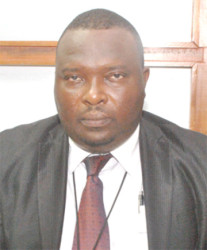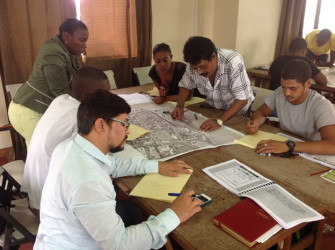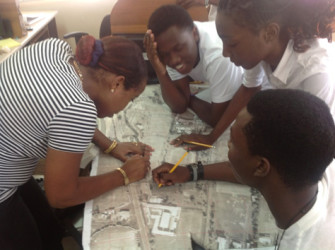Administrative Coordinator of the Guyana Geology & Mines Commission (GGMC) Mining School and Training Centre John Applewhite-Hercules believes that as public interest centres increasingly on building capacity in the industry the role of the school has become more important.
Beginning on October 22, the centre in collaboration with the Guyana Geology and Mines Commission, the Guyana Women Miners Organisation and the Guyana Gold and Diamond Miners Association will be conducting a 10-day field course – Advanced Level Training for Prospectors – in the White Hole Mahdia area and surrounding mining locations.
In an extended interview on Wednesday, the coordinator of the mining school told this newspaper that the course has been designed to respond to several critical challenges confronting the sector’s small and medium scale miners including being able to predict and monitor the likelihood of mining pit collapses; difficulties associated with prospecting for “profitable work grounds” for mining; containment/recycling of waste (muddy) water in tailings ponds and subsequent discharge, in accordance to the requirement of the Environmental Regulations 2005 and increasing gold production and simultaneously eliminating mercury use by utilizing technology.

Applewhite-Hercules told Stabroek Business that the expectation is that at the conclusion of the advanced level programme participants are expected to be able to function as field managers and general managers of small and medium scale mining operations. He said the miners “will be actively involved in project based/demonstration type field training” designed to address the aforementioned challenges.
An alumni of the Guyana Mining School and Training Centre Inc Prospectors Training Programme is to be established to enable feedback and monitor progress of implementation of knowledge gained to enhance efficiency and compliance to regulations at mining operations across the six mining districts of Guyana.
While the Mahdia course will focus on the first two aforementioned challenges facing the sector the third will be addressed through the Inter-American Development Bank-funded project, ‘Supporting Technical Education.
In the Extractive Industry in Guyana’ commencing in November. Further, a United Nations Development Programme (UNDP)-funded programme titled ‘Maintain-ing Biodiversity in Mining’ will focus on helping miners adhere to the upkeep of the codes of best practices in the sector.
Stabroek Business has seen the curriculum for the Mahdia programme which will include the creation of an advisory on safe mining distances for mine operators.
According to Applewhite-Hercules participants in this course “will benefit from competencies in GPS, map-reading, navigation and sampling techniques in securing disturbed and undisturbed samples of overburden, within which their mining operations are embedded.” These soil samples will be tested to determine the geological unit to which they belong. The samples will be labelled and preserved and their geographical positions taken using the GPS.


Participants, meanwhile, will be taught to understand the concept of slope failure and the factors that result in mining pit failures. “Soil samples will be subjected to geo-technical laboratory tests at the University of Guyana laboratory and safe mining distances will be designed for pit walls of various heights within various lithological soil types. A map showing the major soil types and [an] associated advisory for the major lithological units will be developed and simplified for distribution to participants and miners within the project areas,” Applewhite-Hercules told Stabroek Business.
The training programme also seeks to develop a mineral property evaluation programme for mining properties within the project area. Applewhite-Hercules explained that a key mining challenge faced by small and medium scale mining operators is how to identify profitable work grounds for mining. Basic questions including tonnage of overburden that the miner would have to mine, the volume of gold that can be anticipated from the mine area and projected operating costs, will be addressed.
“These questions will be answered by participants in a practical way during the programme through various activities including measuring the dimensions of overburden and gravel layers; taking grab and channel samples of overburden and gravel layer; use of the XRF machine to rapidly test the gold concentration within the gravel layer; taking the mass of a fixed volume of the gravel layer to approximate the wet bulk density in the fields, and a range of other technical studies,” he said.
To attend the advanced level training programme, completion of the introductory and intermediate levels of the Prospectors Course is required.
Meanwhile, miners in the Mahdia/Konwaruk/ Black Water/Micobie areas are invited to attend an introductory level training course at the GGMC Mines Station Compound in Mahdia, followed by the intermediate level training from October 7-16 at the same venue.




